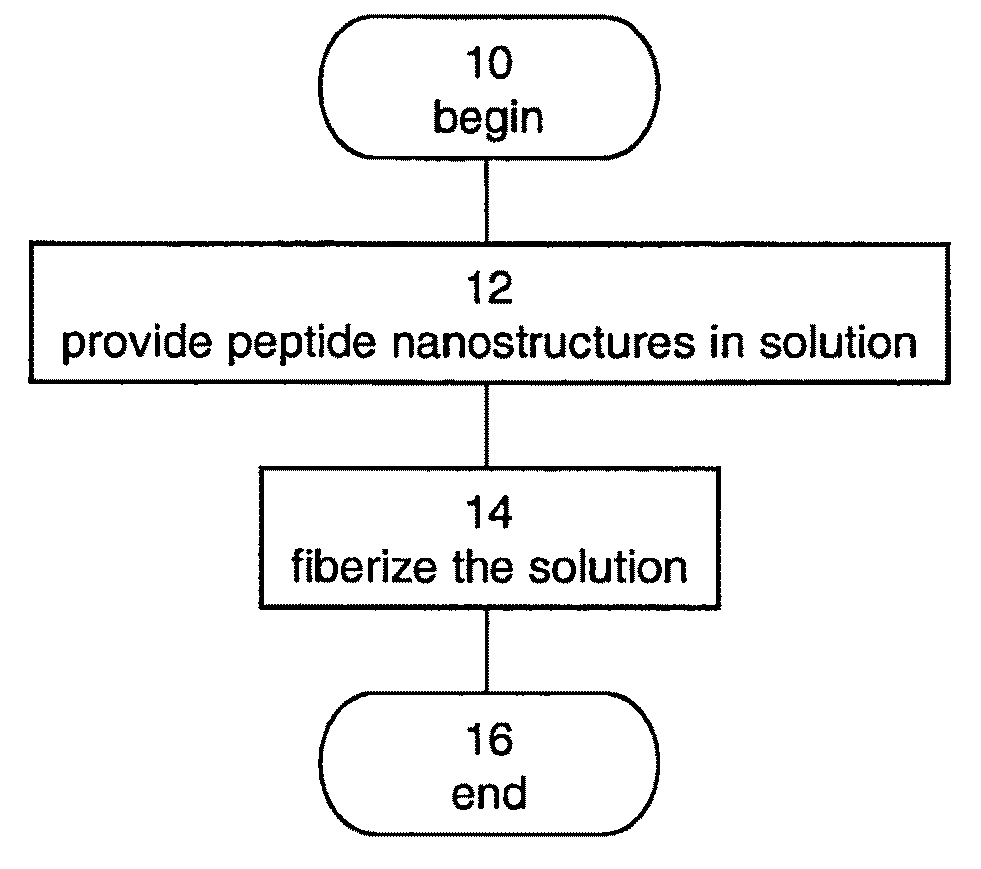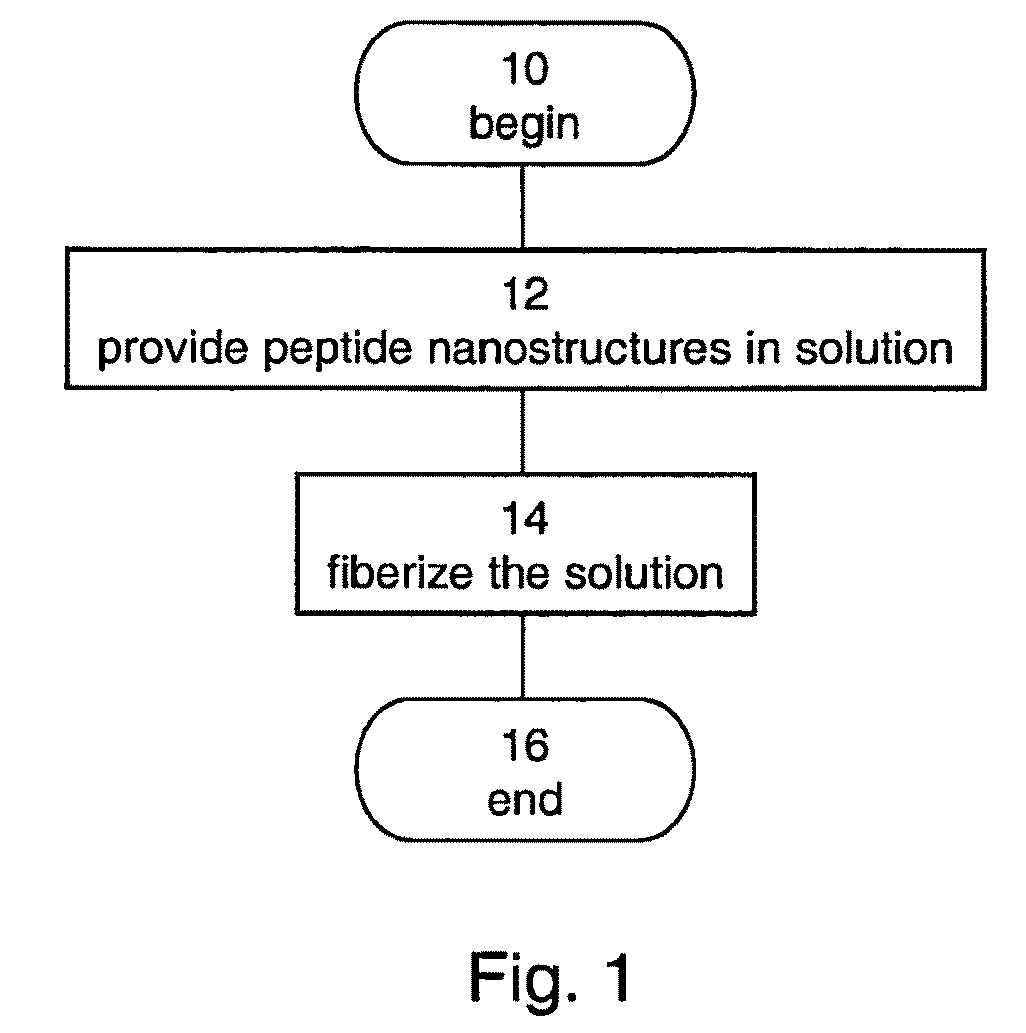Method of forming a fiber made of peptide nanostructures
a technology of peptide nanostructures and fibers, which is applied in the direction of ceramic shaping apparatus, electrical equipment, yarns, etc., can solve the problems of high cost of carbon nanotubes, inability to meet the requirements of a single particle size,
- Summary
- Abstract
- Description
- Claims
- Application Information
AI Technical Summary
Benefits of technology
Problems solved by technology
Method used
Image
Examples
example 1
[0173]Thin film of peptide nanostructures was manufactured, in accordance with preferred embodiments of the present invention.
[0174]The manufacturing process is shown in FIGS. 5A-C. In a first step, shown in FIG. 5A, Boc-FF-COOH dipeptide was dissolved in benzene to a concentration of 10 mg / ml and placed in a reaction beaker. In a second step, shown in FIG. 5B, a water solution was added into the reaction beaker. As shown in FIG. 5B, an interface was formed between the benzene and the water solution. The benzene and the water solution were incubated for several hours. FIG. 5C shows a film of Boc-FF-COOH dipeptide which was formed at the interface after incubation.
example 2
[0175]The Langmuir-Blodgett technique was employed to manufacture a thin film of peptide nanostructures, in accordance with preferred embodiments of the present invention.
[0176]A droplet of Boc-FF-COOH dipeptide was dissolved in chloroform-methanol (9:1) to a concentration of 1 mg / ml. The resulted solution was then applied on a surface of water in a Langmuir-Blodgett trough. Moving barriers, positioned at the ends of the trough were used to apply pressure on the droplet, and a film of nanostructures was formed.
[0177]FIG. 6 shows a pressure-area isotherm obtained while applying the pressure. As shown in FIG. 6, the surface tension increases when the surface area is decreased, and peptide molecules are assembled together into a monolayer, which is further compressed into a film.
example 3
[0178]An array of peptide nanostructures was manufactured on a substrate, in accordance with preferred embodiments of the present invention.
[0179]Diphenylalanine peptide was dissolved to a concentration of 100 mg / ml in 1,1,1,3,3,3-Hexafluoropropanol. 30 μl of the solution were applied onto siliconized glass and let to dry in room temperature.
[0180]FIGS. 7A-B are a low magnification (FIG. 7A) and a high magnification (FIG. 7B) images of the substrate, obtained using a high-resolution scanning electron microscope. As shown in FIGS. 7A-B, an aligned array of peptide nanotubes was formed on the substrate.
PUM
| Property | Measurement | Unit |
|---|---|---|
| length | aaaaa | aaaaa |
| length | aaaaa | aaaaa |
| diameter | aaaaa | aaaaa |
Abstract
Description
Claims
Application Information
 Login to View More
Login to View More - R&D
- Intellectual Property
- Life Sciences
- Materials
- Tech Scout
- Unparalleled Data Quality
- Higher Quality Content
- 60% Fewer Hallucinations
Browse by: Latest US Patents, China's latest patents, Technical Efficacy Thesaurus, Application Domain, Technology Topic, Popular Technical Reports.
© 2025 PatSnap. All rights reserved.Legal|Privacy policy|Modern Slavery Act Transparency Statement|Sitemap|About US| Contact US: help@patsnap.com



